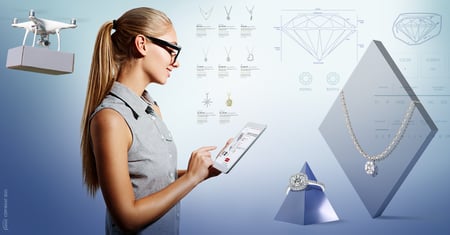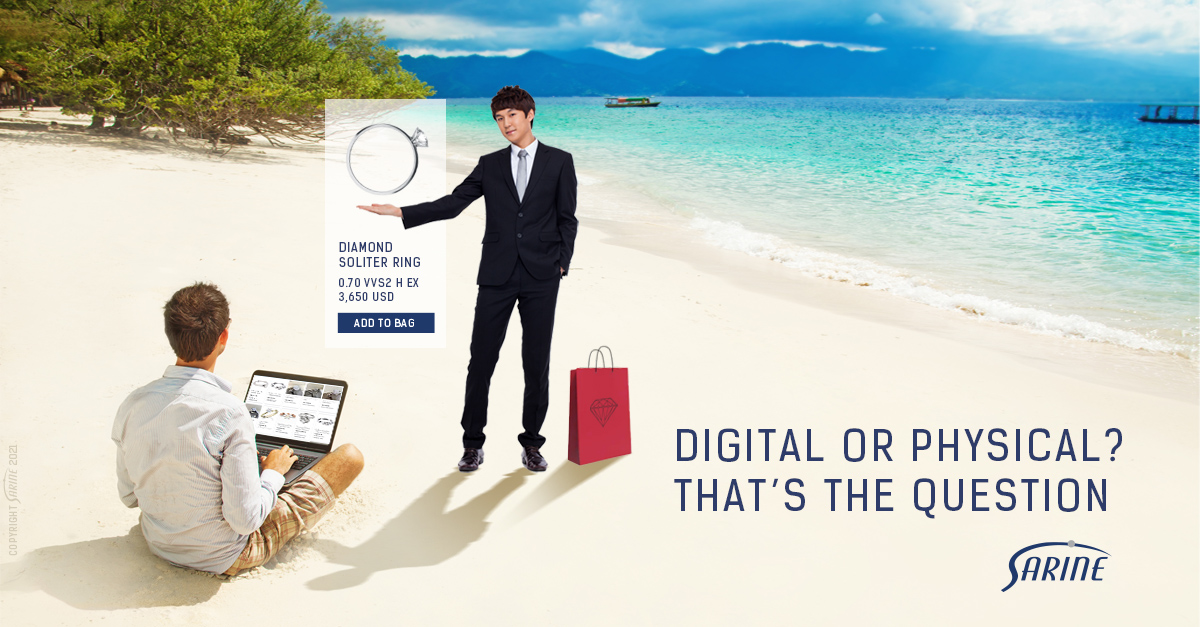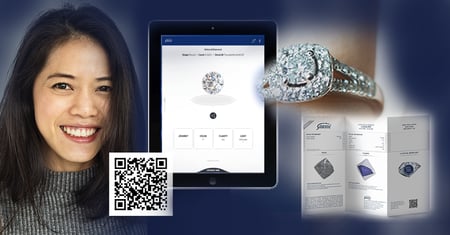In 2021, Amazon announced it was opening its own department stores.
This may be the moment when the concept of “hybrid retail” really became real.
Digital or Physical? That is the Question!
Throughout the COVID pandemic, retailers and analysts kept a close watch on the dramatic and rapid changes in consumer behavior. At first, thanks to lockdowns and social distancing, there was a boom in e-commerce. More people than ever were ordering online, from groceries to clothing and takeaway food. Many wondered if what we were witnessing was a massive global shift, where most transactions would now take place digitally and virtually.
But as the vaccine rollout continued and the world slowly opened up again, it became clear that – despite the upheaval of all those months – people are still people, and they crave face-to-face human interactions and brick-and-mortar retail experiences.
Even Amazon, which increased its profits by 220% during the pandemic, understands that the pandemic won’t last forever, and the in-store part of the consumer experience is not going away, and may even be more important than ever before.
What is Hybrid Retail?
Today’s consumers have become more accustomed to the convenience and advantages of online shopping. During the pandemic, many brands had no choice but to up their e-commerce game, and improve their online purchase experiences and customer journey.
On the other hand, consumers still want the real-world shopping experiences that have been part of human life for centuries. The ability to enter a store, touch and try products, browse in a tactile way, and interact with salespeople is vitally important to consumers too. This is borne out by the pandemic data. Despite the increase in online shopping, three out of every four purchases were still made in physical stores.
For retailers, the challenge now is how to create a hybrid blend of digital and real-world touchpoints that will satisfy these two opposing sides of consumer preferences.

What Hybrid Means for Diamond Retail
The question of how to create a hybrid consumer experience is particularly relevant for diamond and jewelry retailers, for several reasons.
- The industry is typically more reliant on human connections. Buying a diamond or jewelry piece is an emotional experience for many, tied to some of life’s most important milestones and celebrations. In addition, jewelry is a luxury item, and often a substantial financial investment for the customer. For these reasons, having that human touch with a jeweler or retailer is more important in the jewelry purchase than in the purchase of other, more “disposable” products and services.
- Younger, up-and-coming diamond buyers are digital natives. At the same time, the new generation of customers who are buying engagement rings and other milestone gifts are more tech-savvy than previous generations. They expect the purchase journey to cover all the channels and devices where they spend their time, including social media, apps, smartphones, and email. While they still crave the tactile sense of the diamond, the traditional in-store experience won’t be enough.
- The customer journey is complex, and it demands both digital and physical touchpoints to tell the complete story. Particularly for diamond retail, being able to tell the long, complex, and compelling story of a diamond is critical. An engaging, trustworthy diamond story ensures the retailer is far better positioned to make the sale. This requires a hybrid blend of digital and real-world interactions and capabilities, such as interactive diamond images, advanced traceability, and diamond authentication.
Sarine Retail Products – Blending Tech with the Human Touch
Even before the pandemic, we at Sarine foresaw that digital tech will become a crucial component of diamond jewelry retail. Now that the hybrid model is settling in as the “new normal”, jewelry retailers can depend on Sarine for a host of in-store and digital retail solutions to support a hybrid experience:
- Digital reports: Our range of digital diamond reports provides an engaging, interactive diamond experience that goes way beyond the standard printed report. There are several advanced reports available, including the Diamond Journey traceability report, which tracks the diamond from the mine to the polished result, AI-based 4Cs grading report that provides objective, accurate, and verifiable grading of clarity and color, more reliable than any other, and light performance reports, offering a new dimension for customers to understand a diamond’s unique visual beauty. All Sarine reports are available in accessible digital format, ready to experience in-store or at home, on any laptop and mobile device, fully shareable via social media, email, or chat app.
- 3D Origin™ model: A truly hybrid retail tool, this is a 3D physical model of the original rough stone from which a particular polished diamond was cut, based on verifiable Sarine diamond traceability data. Retailers can present the 3D Origin model at the store, as a tactile experience for the customer, helping the customer understand a diamond’s unique character and journey, and enhancing the in-store experience to boost sales.
To get a sense of the Sarine Retail Experience take a look at a video produced by the prestigious Australian brand Janai Jewellry featuring our digital report and the 3D Origin™ model:
There are many more Sarine retail solutions to help you create a new hybrid experience for your business. Check them out here, or reach out to your Sarine sales rep for more information and guidance.





-1.jpg?width=310&name=blog_image%20(003)-1.jpg)





